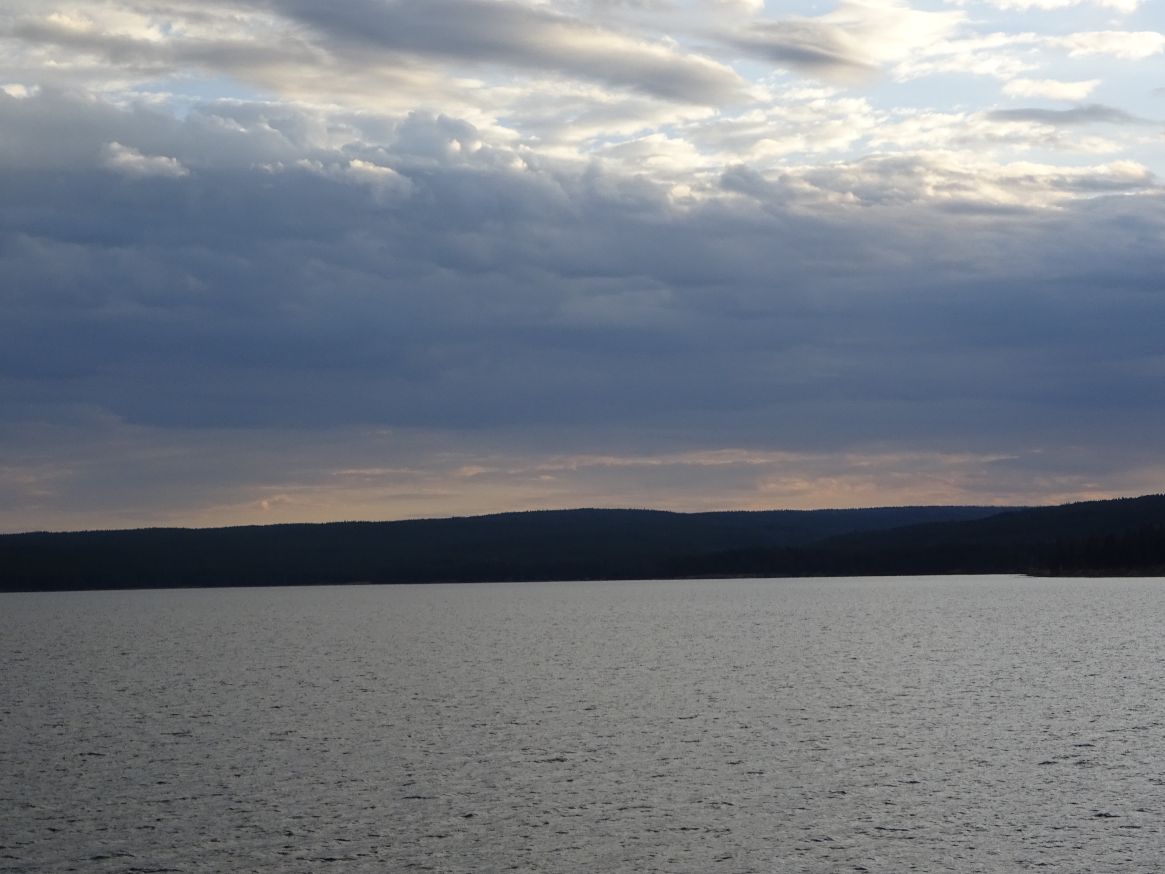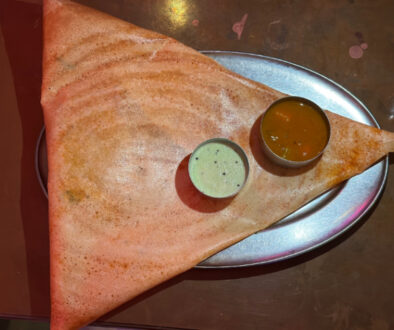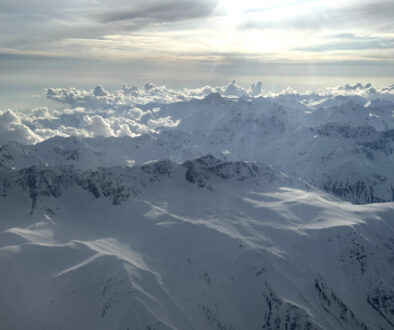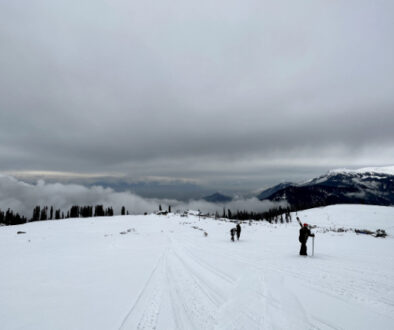Travel Blog
The Best of Yellowstone National Park in 5 Days
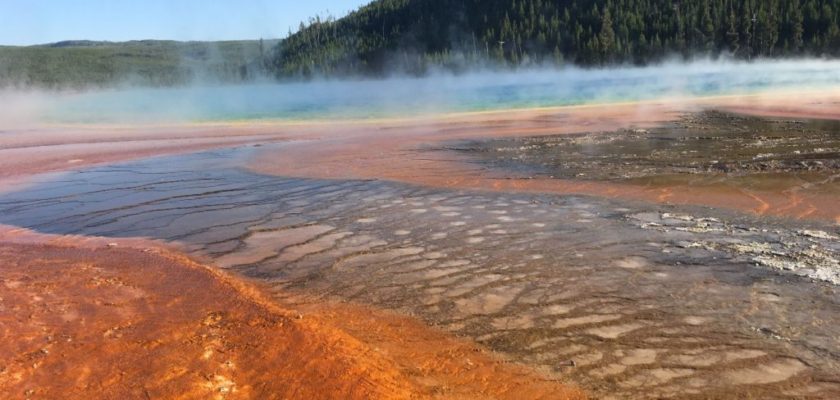
Yellowstone is one of the most beautiful parks in the U.S., an unusual landscape created by giant volcanos that erupted three times over the past 2.1 million years. The last eruption, 640,000 years ago, resulted in the formation of geysers and hot springs scattered over Yellowstone’s 2 million acres.
But navigating Yellowstone can be tough, where do you start? If you are a nature lover like me, you want to see the best of the park in a few days. Outlined below is my itinerary that features some excellent hikes and vistas but watch out – some of these hikes can be quite strenuous!
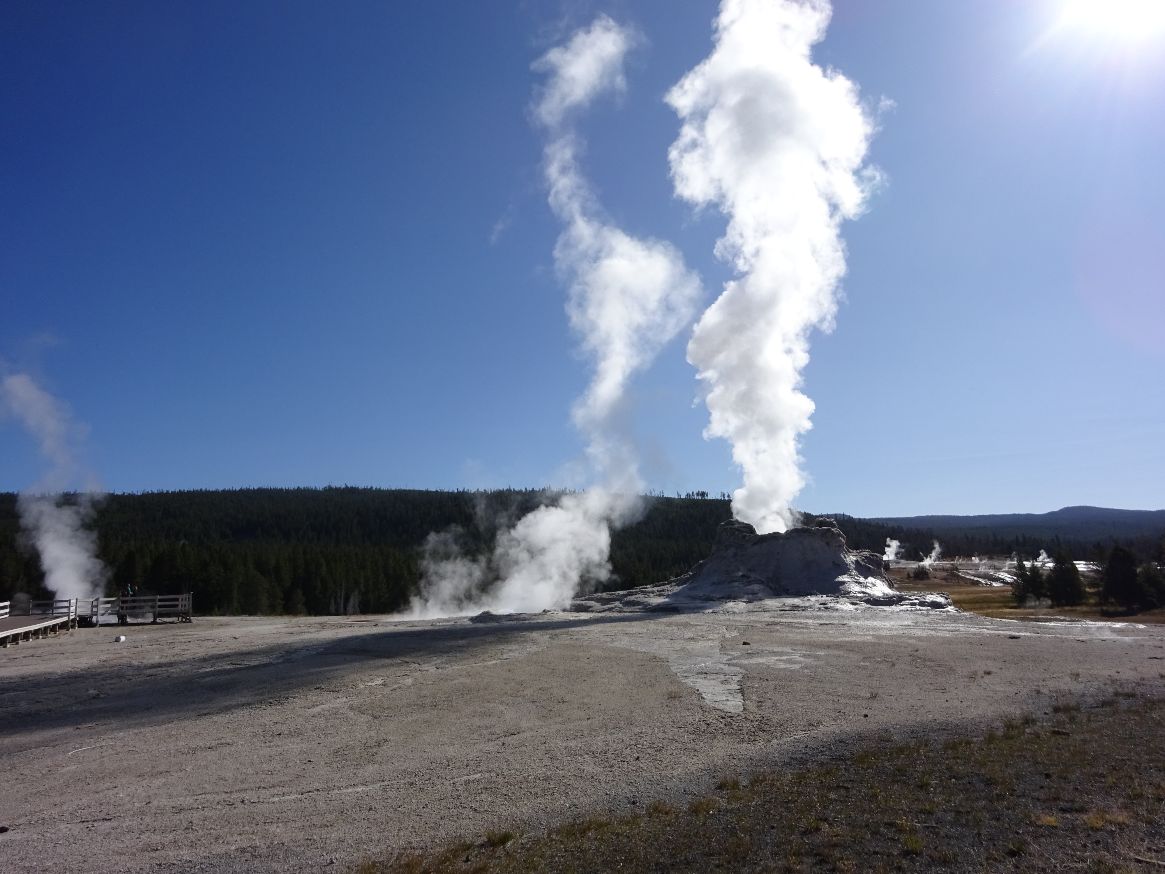
Day 1: Boiling River and Terrace Hot Springs
We entered the park from the North through Gardiner as we flew into Bozeman, Wyoming. After settling into the spacious and recently refurbished Mammoth Hot Spring Hotel, we changed into bathing suits and with towels headed to Boiling River – a not-to-be-missed thermal bath experience created by a hot spring mixing with the cold Gardiner river. We spent about two blissful hours lying and splashing in rejuvenating waters overlooking rugged mountains and a wide expanse of blue sky.
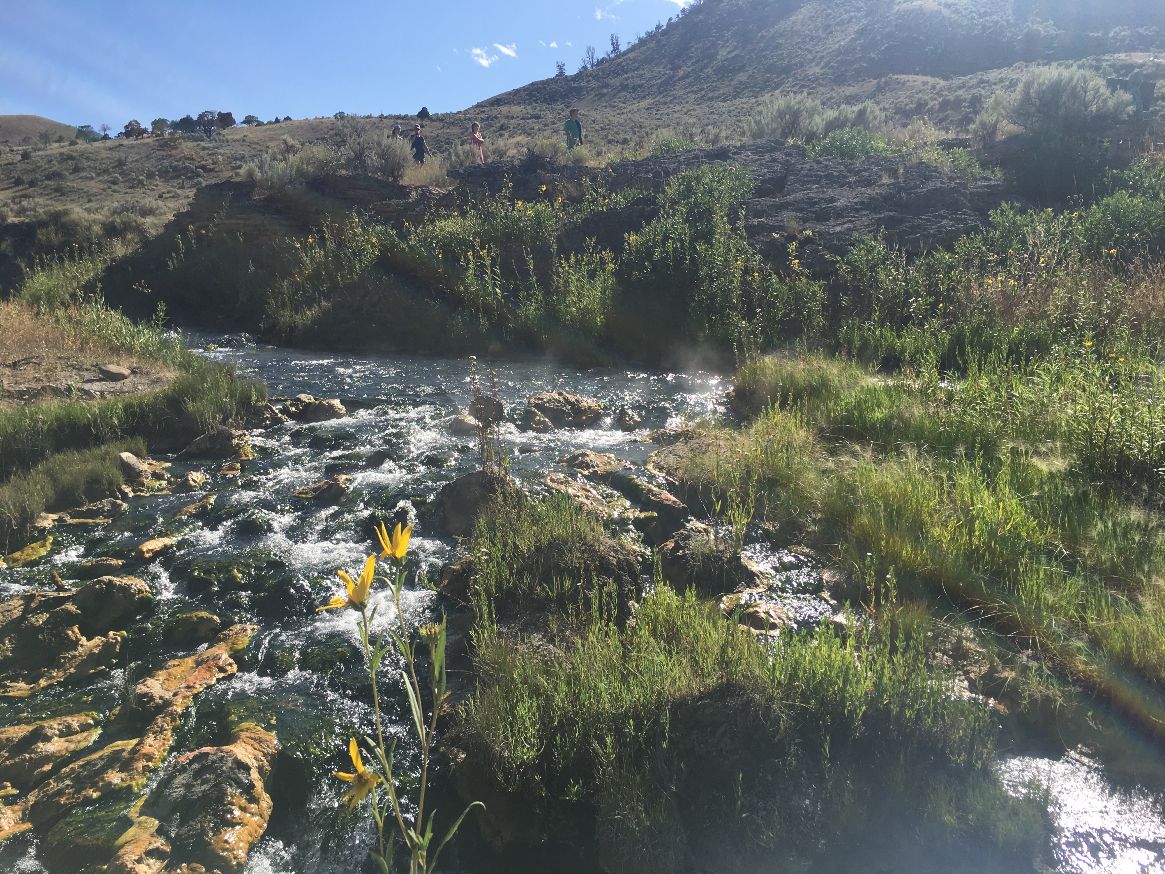
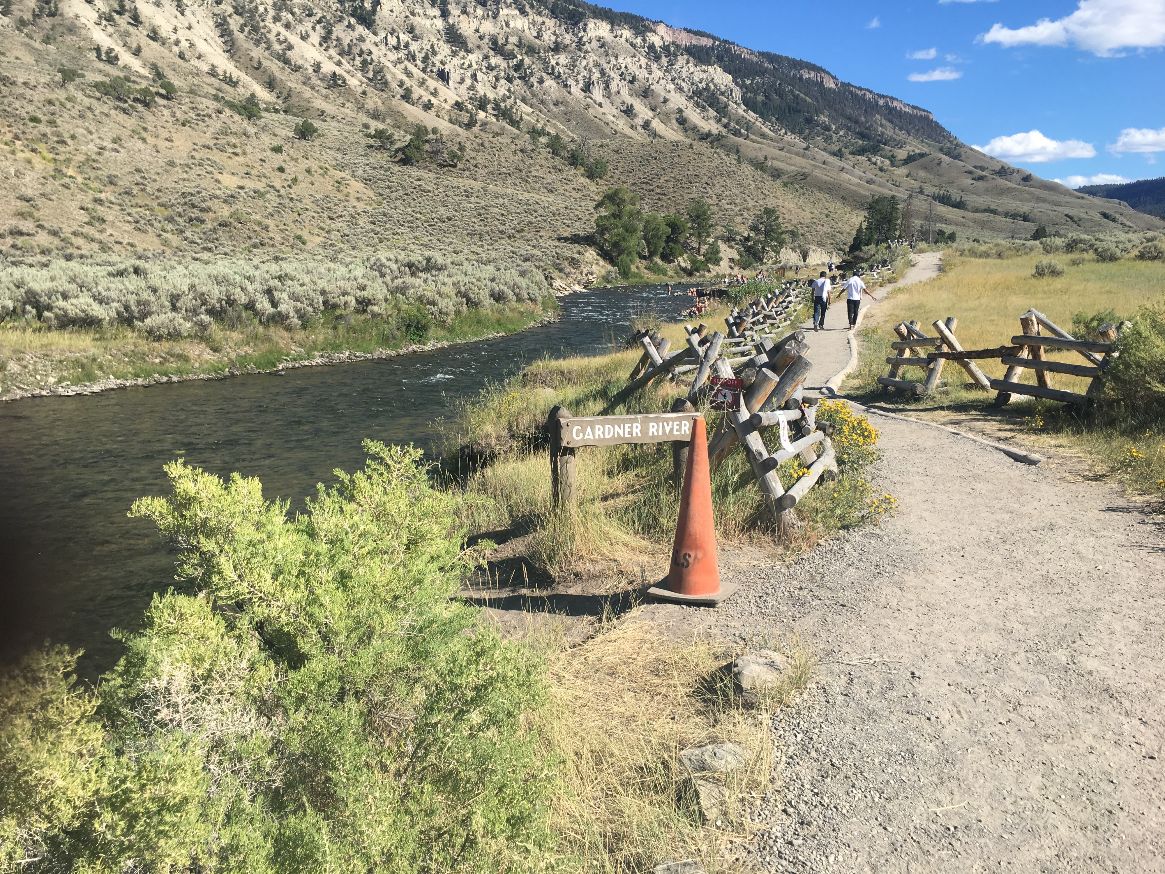
Native Americans believe that hot springs offer cures for aches and pains and they immersed their deceased high chiefs in these waters to further their path into the heavens. Later, Americans used thermal waters to cook their meat and believed them to be a cure for rheumatism and arthritis.
Later, after spending some time observing Elk who had come to graze in the center’s gardens, we did a tour with a park ranger of the Terrace Hot Springs: an unusual landscape of travertine terraces formed when water heated deep below percolates through buried limestone creating calcium carbonate deposits. An excellent example of this is the Minerva Terrace. Shimmering within this hot spring is a dynamic artist inspired patchwork of colors created by ‘thermophiles – billions of microorganisms which live and prosper among gases.
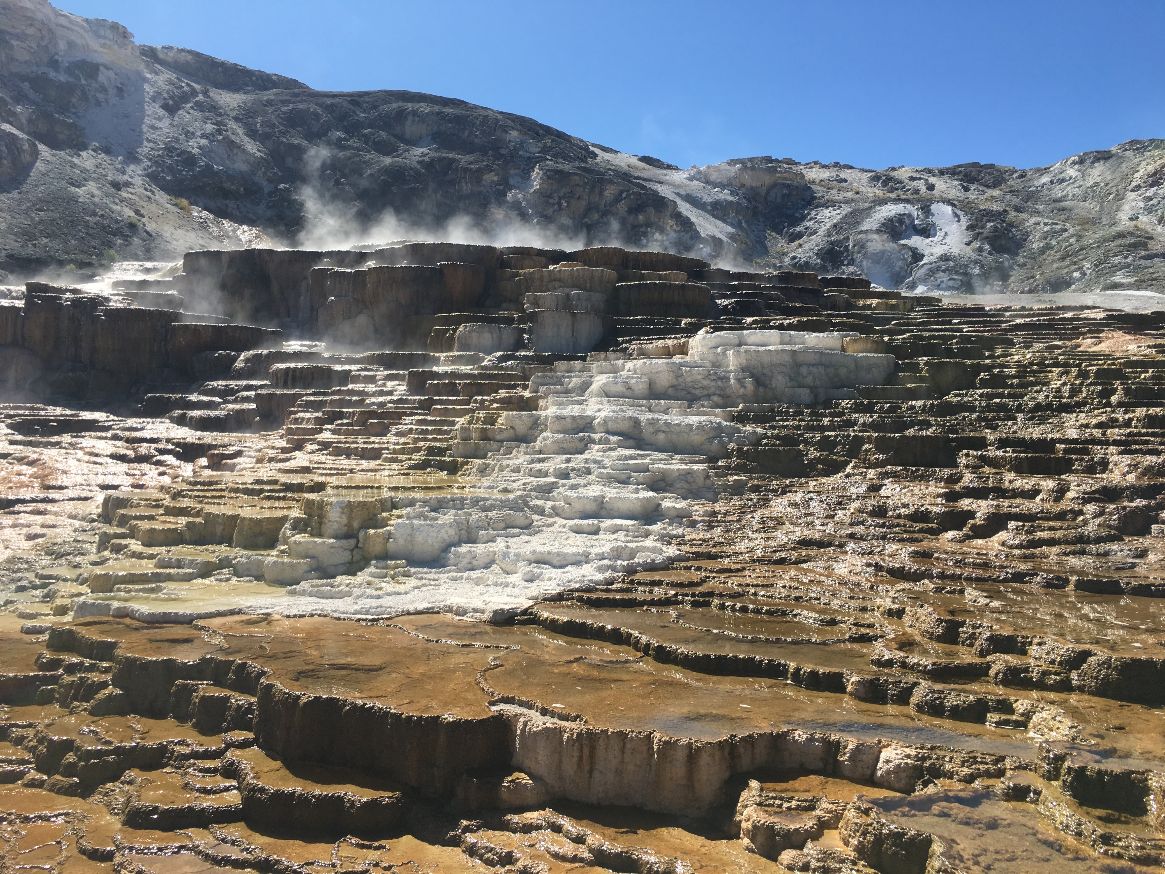
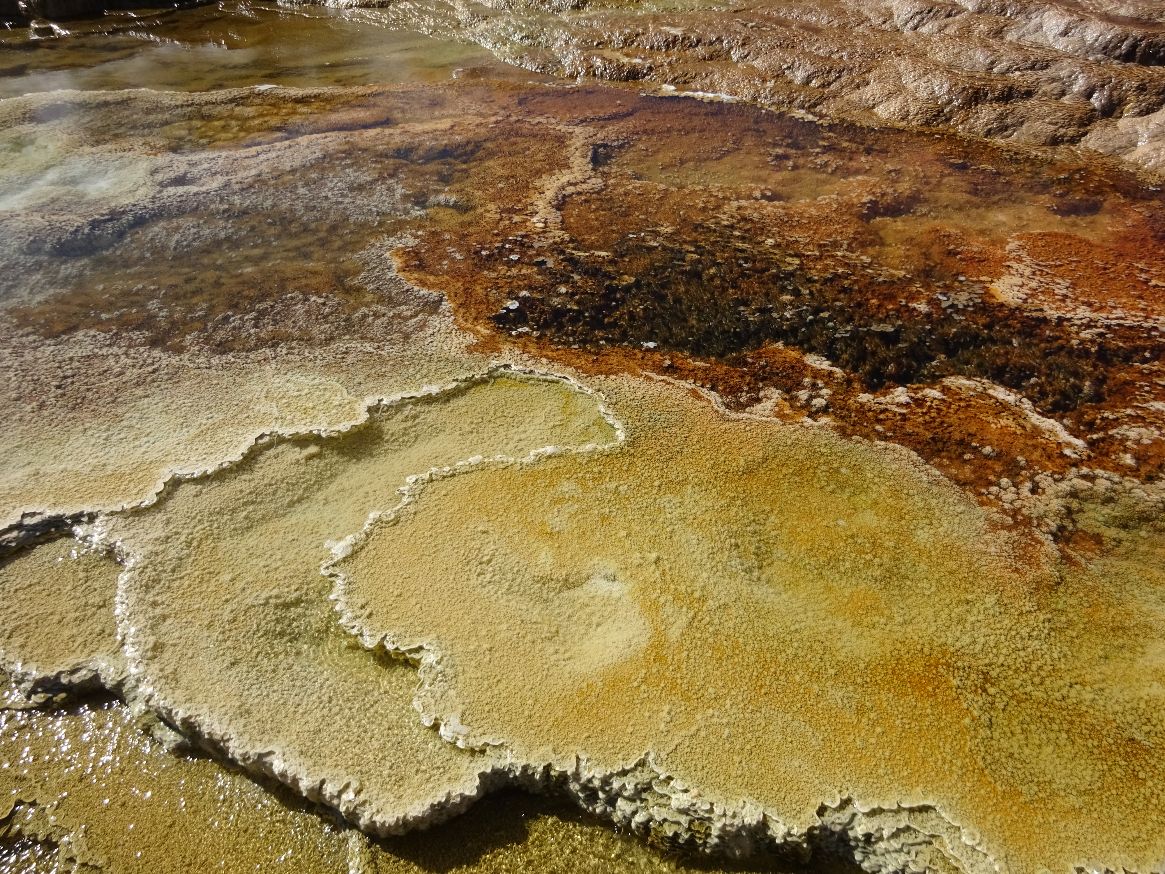
Day 2: Norris Geyser Basin
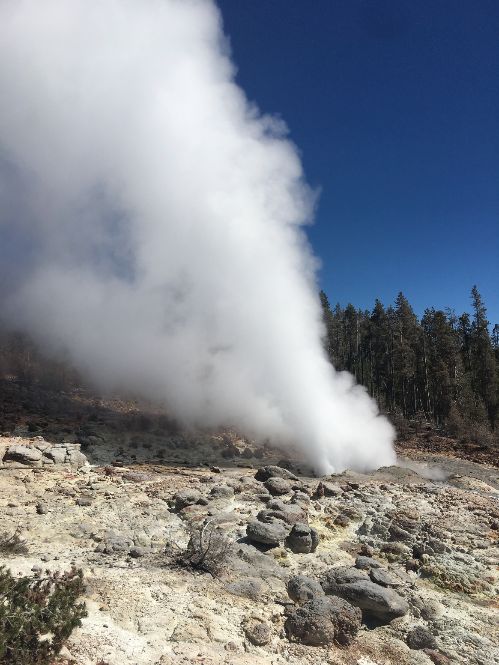
The next day we drove to the southern part of the park towards Old Faithful. Along the way we stopped at the Norris Geyser Basin- another thermal area. I would recommend a quick visit to the museum which orients visitors to the parks geological history. The park ranger on duty suggested we visit Steamboat Geyser which was actively gushing water and steam. Steamboat is the tallest geyser in the world and can reach more than 300 feet. Its last eruption was on August 20, 2019.
We walked the 1.5-mile boardwalk to see Emerald Spring – a pool lined with sulfur deposits which combines with natural light to create this magnificent bright iridescent color. The run-off mats created by the hot spring are unique and intense in color.
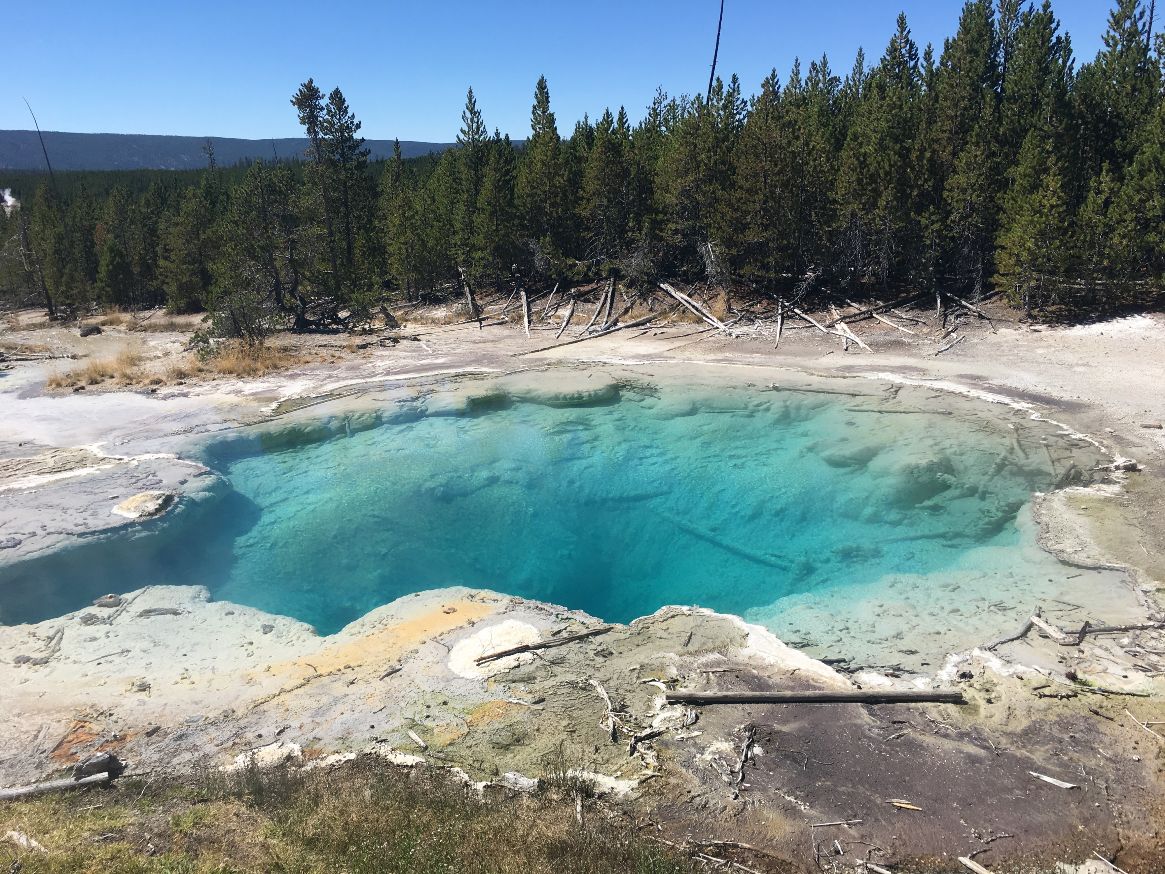
Along the way we passed Firehole Canyon Drive, a river flowing within a canyon, the only other swimming area in Yellowstone. We decided to give this a pass as the water temperature was frigid.
That evening we stayed at the Old Faithful Inn, a beautiful rustic log and stone hotel featuring a massive stone fireplace. The rooms are spacious and the inn features a full-service restaurant which requires reservation.
Day 3: Old Faithful Geyser, Grand Prismatic
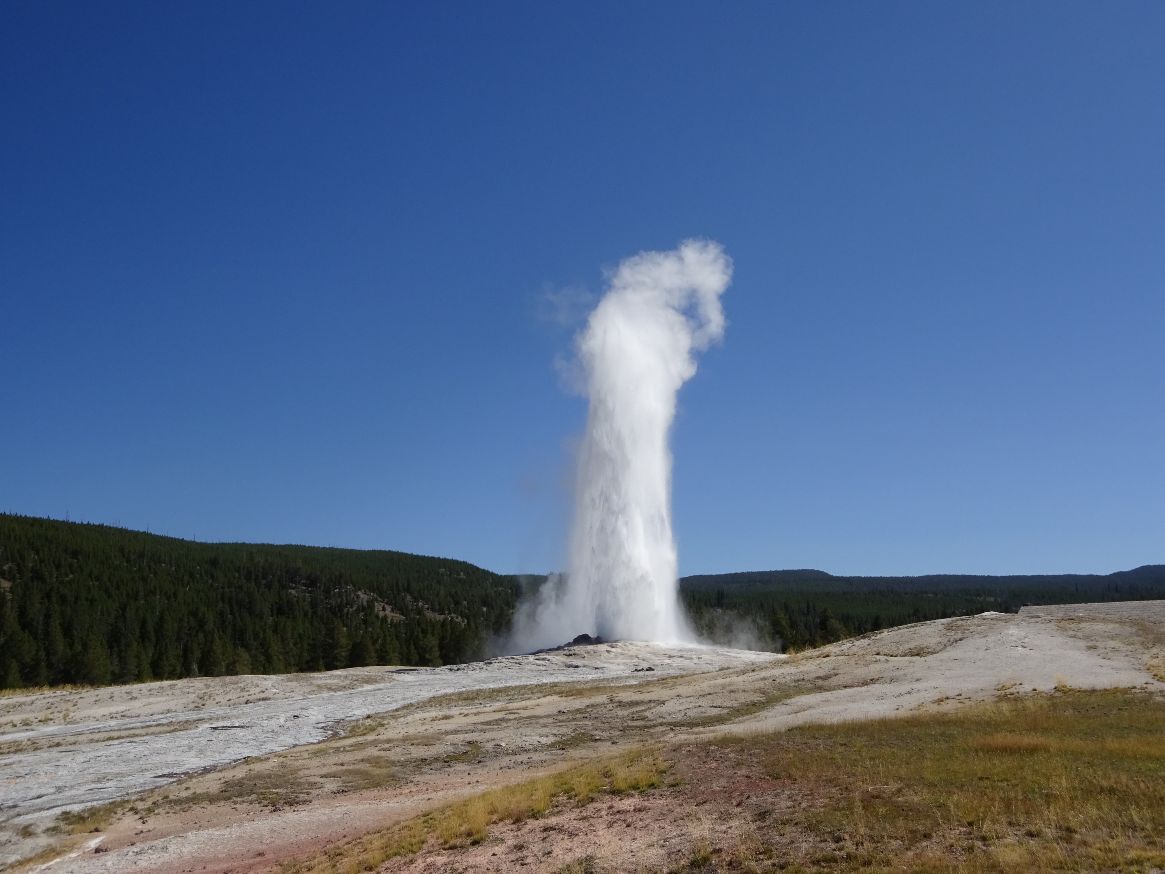
In the morning I did the boardwalk trail at Old Faithful. Albeit a long walk (about 3 miles each way), I highly recommend it as you see a variety of geysers, hot springs, fumaroles and chromatic pools. Yellowstone has around 10,000 hot springs scattered around the park, most accessed by walking. Highlights were the Crested, Chromatic, and Morning Glory Pool – a deep, dazzling azure pool. The walk features not just breathtaking pools but lined alongside are evergreens fulfilling my requirement for peace, meditation and rejuvenation.
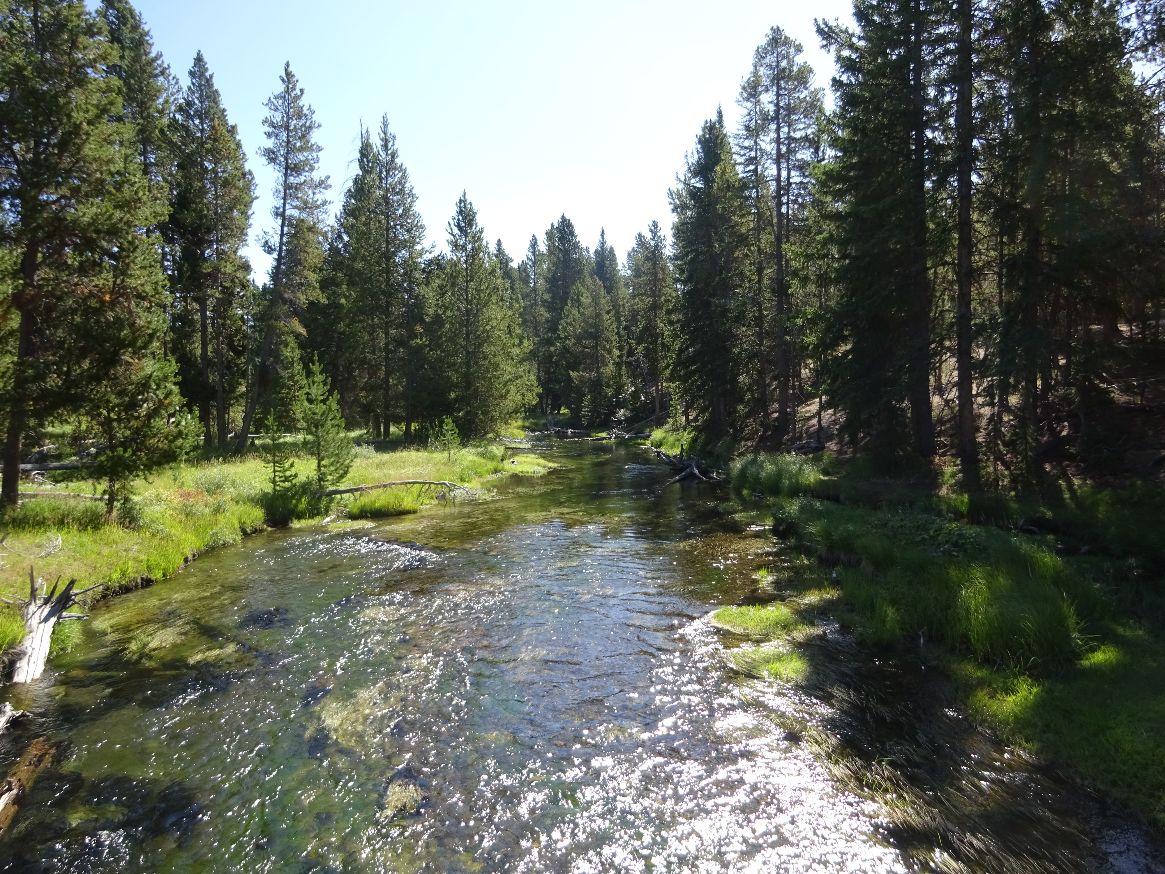

Later we joined others to watch Old Faithful erupt. The geyser erupts every 90 minutes and it’s interesting to watch the eruption both at night and in the day, for lighting contrasts.
We headed back North to Grand Prismatic, the largest and most visited hot spring in Yellowstone noted for its vivid colors and brilliance. Its expanse stretches 200 feet and its high temperature cloaks the spring in steam.
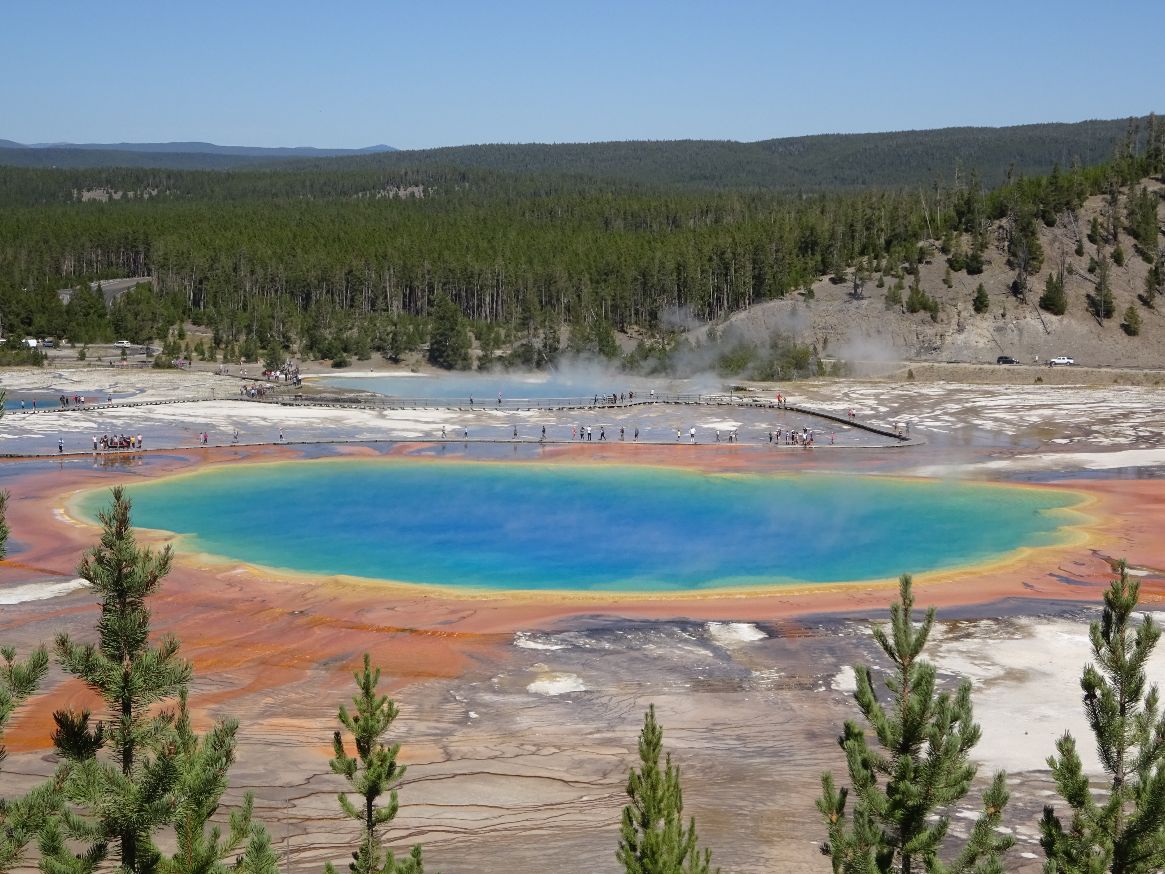
The blue of the water is caused by the water’s mineral particles scattering sunlight and the run-off channels are brilliant hues of red, orange and brown created by heat-loving bacteria that live in miniature forests – the bacteria above use sunlight for photosynthesis and those below perform necessary recycling and decomposition functions. The result is a carpet of colorful pigments.

I recommend seeing the Prismatic from the upper overlook accessed by the Fairy Falls trail which necessitates a bit of a climb.
We continued our journey north and then west to Canyon Village where we spent the next 3 nights. Compared to the other inns, Canyon Lodge was my least favorite accommodation as it is sprawling; made up of various lodges all within walking distance to the dining area. We changed lodges to be in the main lodge as the rooms there were nicer and it housed a coffee shop.
Day 4: Lamar and Hayden Valley
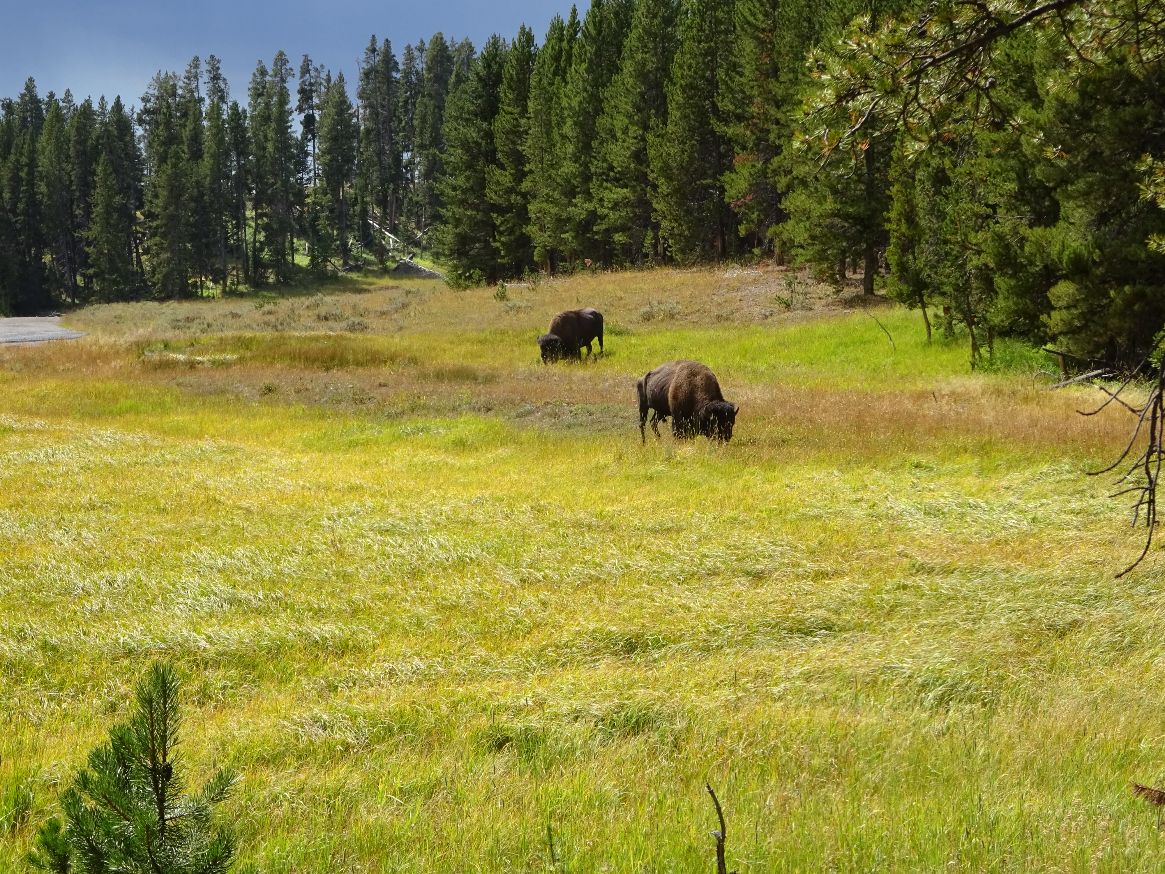
In terms of scenery, nothing beats Lamar and Hayden Valley, a savannah landscape framed by hills. In the Lamar Valley we did a 6-mile hike, named the Hell Roaring Mountain Trail. The trail is a steep descent to a suspension bridge, followed by a sage bush valley walk which ends at a creek. Bison, Elk and bear can be seen on these walks.

We spent the rest of the day enjoying the scenery and spotting grazing bison who often held up traffic. We ended the day doing another hike, recommended by a park ranger, called the Trout Lake trail. The hike was mediocre but I was grateful as it brought us way up the Lamar Valley where the panorama was spectacular.
Day 5: Grand Canyon, Mud pots and Yellowstone Lake

Our last day at the park ended up being the finest as we entered the Grand Canyon. I was under the impression that the Grand Canyon existed only in Arizona, but the aftereffect of Yellowstone’s volcanic eruption was the creation of a colorful walled canyon with striking waterfalls. We did the South Rim trail to Artists Point – accurately named as the trail lines the dramatically colored pink and white canyon walls carpeted with conifer trees. In addition, we did a few north rim trails that led us to look out points close to the waterfall. From the canyon we drove south to Yellowstone Lake stopping to see a Mud Volcano.
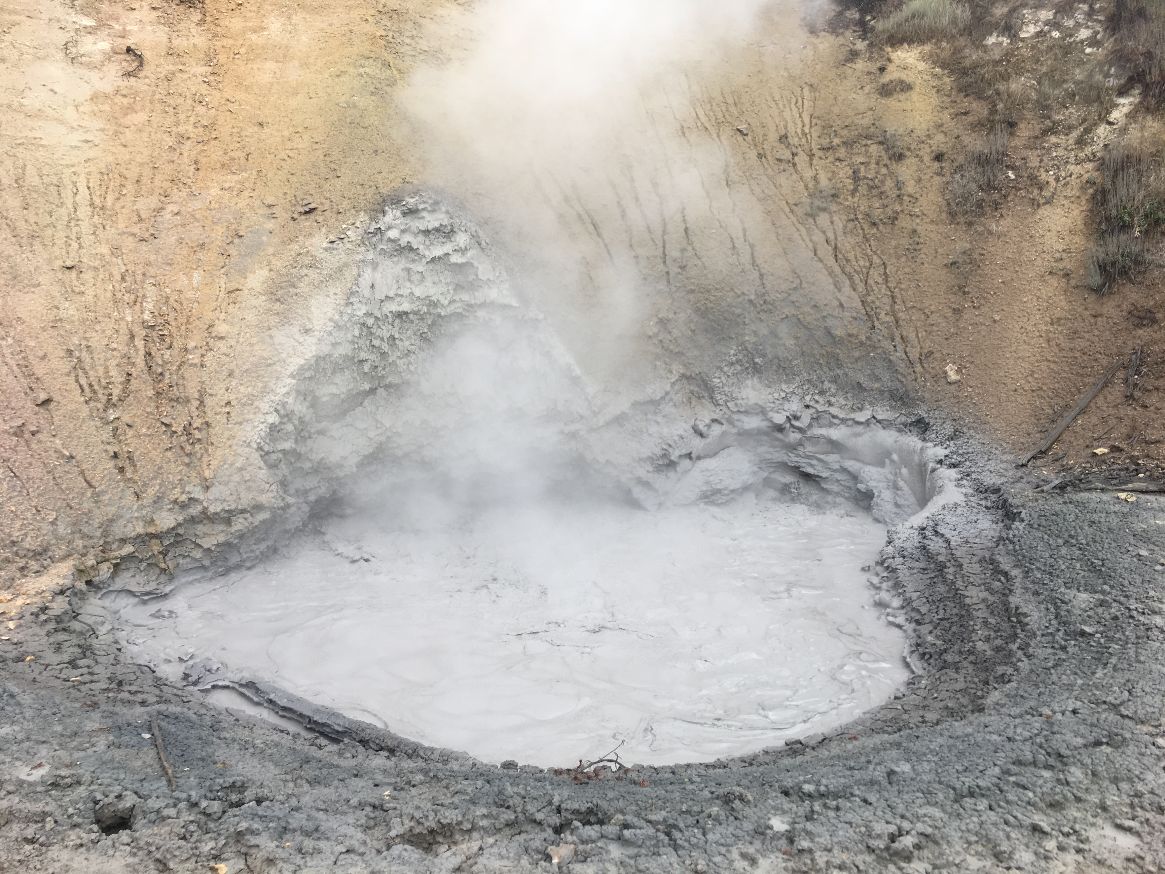
The whiff of rotten-eggs greeted us upon arrival, an effect of the hydrogen sulfide gas spouting over this unusual volcano.
We ended our trip with a lovely dinner at the Lake Hotel which has a grand view of the lake and served us the best, most elegant meal we enjoyed at Yellowstone.
